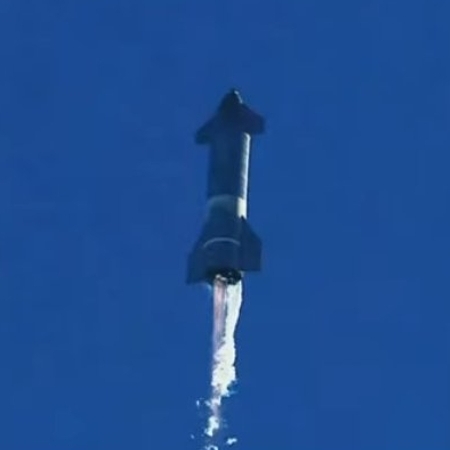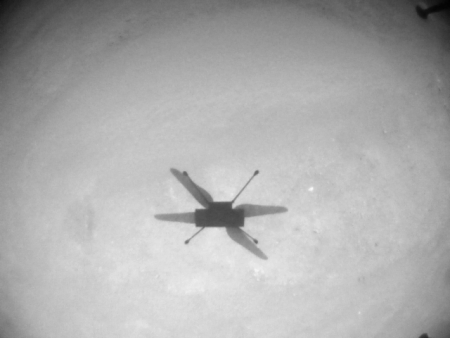Make concrete on Mars using human blood?
What could possibly go wrong? Scientists at the University of Manchester in the United Kingdom have developed a new formulation that can use material known to exist on Mars, combined with the addition of astronaut blood, to produce useful concrete.
Working with simulated lunar and Martian soils, the team experimented with using human blood and waste products as binding material, and turned up some interesting results.
The work showed that a common protein in the blood called serum albumin could be used as a binder to produce a concrete-like material with compressive strength comparable to ordinary concrete. In investigating the mechanisms at play, the team found the blood proteins “curdle” to form “beta sheets” that extend outward to hold the material together.
Even more interestingly, the team found that urea, a waste product found in urine, sweat and tears, could be incorporated to increase this compressive strength by more than 300 percent. That is to say, the key to cosmic concrete stronger than what we have here on Earth might be found in our blood, sweat and tears (and urine).
This work was inspired by ancient building techniques, which often used pig blood in concrete for similar reasons.
Though a lot of this makes sense, especially the utilization of waste products like urine, the idea that future colonies will tap the blood of their citizens for construction purposes raises so many moral questions I can’t list them all here.
For example, let me throw out one possibility should no one think about this too much on Mars. Why not use this need for blood as a method of criminal punishment? Do something the ruling powers think is wrong and we will suck your blood from you to build the colony!
The moral consequences of our actions require long careful thought. Unfortunately, long careful thought simply no longer exists among today’s intellectual and political classes. Instead, they make almost all their decisions off the cuff, based on what “feels” right to them. You merely have to watch the many interviews of Dr. Anthony Fauci in the past year to see what I mean. Nothing he says about masks or mandates is really based on new research or data. He merely throws out an opinion that feels right, at the moment. Thus, he contradicts himself repeatedly, and most of his advice has been worse than useless, resulting in so many unexpected negative consequences they almost cannot be counted.
Try to imagine the horrors that could take place in a colony on Mars, where resources are in short supply, should construction require the use of human blood and the leadership there approaches its problems with the same cavalier attitude toward moral consequences? I can, and it chills my own blood to the core (no pun intended).
What could possibly go wrong? Scientists at the University of Manchester in the United Kingdom have developed a new formulation that can use material known to exist on Mars, combined with the addition of astronaut blood, to produce useful concrete.
Working with simulated lunar and Martian soils, the team experimented with using human blood and waste products as binding material, and turned up some interesting results.
The work showed that a common protein in the blood called serum albumin could be used as a binder to produce a concrete-like material with compressive strength comparable to ordinary concrete. In investigating the mechanisms at play, the team found the blood proteins “curdle” to form “beta sheets” that extend outward to hold the material together.
Even more interestingly, the team found that urea, a waste product found in urine, sweat and tears, could be incorporated to increase this compressive strength by more than 300 percent. That is to say, the key to cosmic concrete stronger than what we have here on Earth might be found in our blood, sweat and tears (and urine).
This work was inspired by ancient building techniques, which often used pig blood in concrete for similar reasons.
Though a lot of this makes sense, especially the utilization of waste products like urine, the idea that future colonies will tap the blood of their citizens for construction purposes raises so many moral questions I can’t list them all here.
For example, let me throw out one possibility should no one think about this too much on Mars. Why not use this need for blood as a method of criminal punishment? Do something the ruling powers think is wrong and we will suck your blood from you to build the colony!
The moral consequences of our actions require long careful thought. Unfortunately, long careful thought simply no longer exists among today’s intellectual and political classes. Instead, they make almost all their decisions off the cuff, based on what “feels” right to them. You merely have to watch the many interviews of Dr. Anthony Fauci in the past year to see what I mean. Nothing he says about masks or mandates is really based on new research or data. He merely throws out an opinion that feels right, at the moment. Thus, he contradicts himself repeatedly, and most of his advice has been worse than useless, resulting in so many unexpected negative consequences they almost cannot be counted.
Try to imagine the horrors that could take place in a colony on Mars, where resources are in short supply, should construction require the use of human blood and the leadership there approaches its problems with the same cavalier attitude toward moral consequences? I can, and it chills my own blood to the core (no pun intended).







